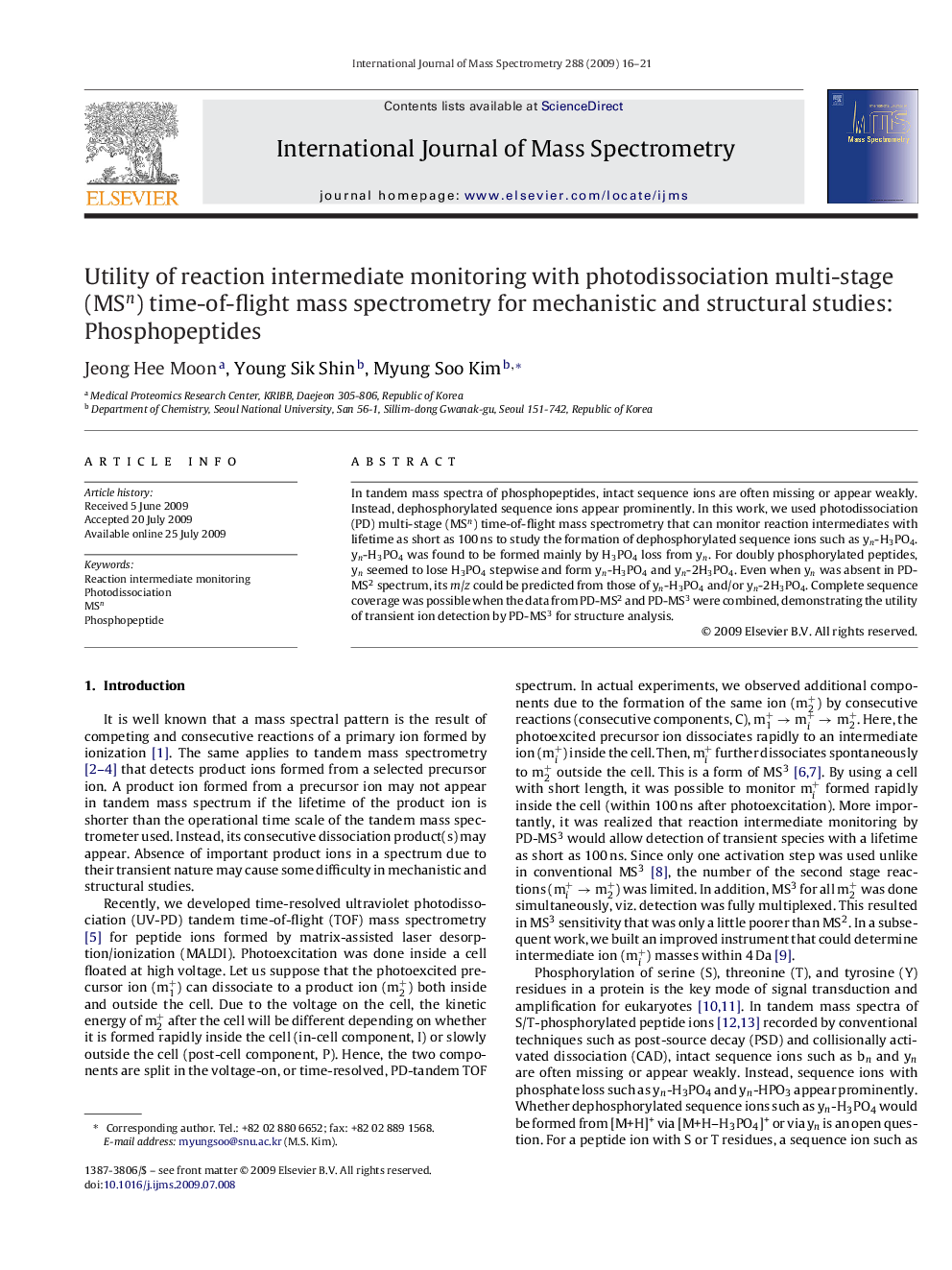| Article ID | Journal | Published Year | Pages | File Type |
|---|---|---|---|---|
| 1193961 | International Journal of Mass Spectrometry | 2009 | 6 Pages |
In tandem mass spectra of phosphopeptides, intact sequence ions are often missing or appear weakly. Instead, dephosphorylated sequence ions appear prominently. In this work, we used photodissociation (PD) multi-stage (MSn) time-of-flight mass spectrometry that can monitor reaction intermediates with lifetime as short as 100 ns to study the formation of dephosphorylated sequence ions such as yn-H3PO4. yn-H3PO4 was found to be formed mainly by H3PO4 loss from yn. For doubly phosphorylated peptides, yn seemed to lose H3PO4 stepwise and form yn-H3PO4 and yn-2H3PO4. Even when yn was absent in PD-MS2 spectrum, its m/z could be predicted from those of yn-H3PO4 and/or yn-2H3PO4. Complete sequence coverage was possible when the data from PD-MS2 and PD-MS3 were combined, demonstrating the utility of transient ion detection by PD-MS3 for structure analysis.
Graphical abstractPhotoexcitation inside a high voltage cell splits a dephosphorylated sequence peak (y3*) into several components. y3* is formed mainly via [M+H]+→y3→y3*.Figure optionsDownload full-size imageDownload as PowerPoint slide
